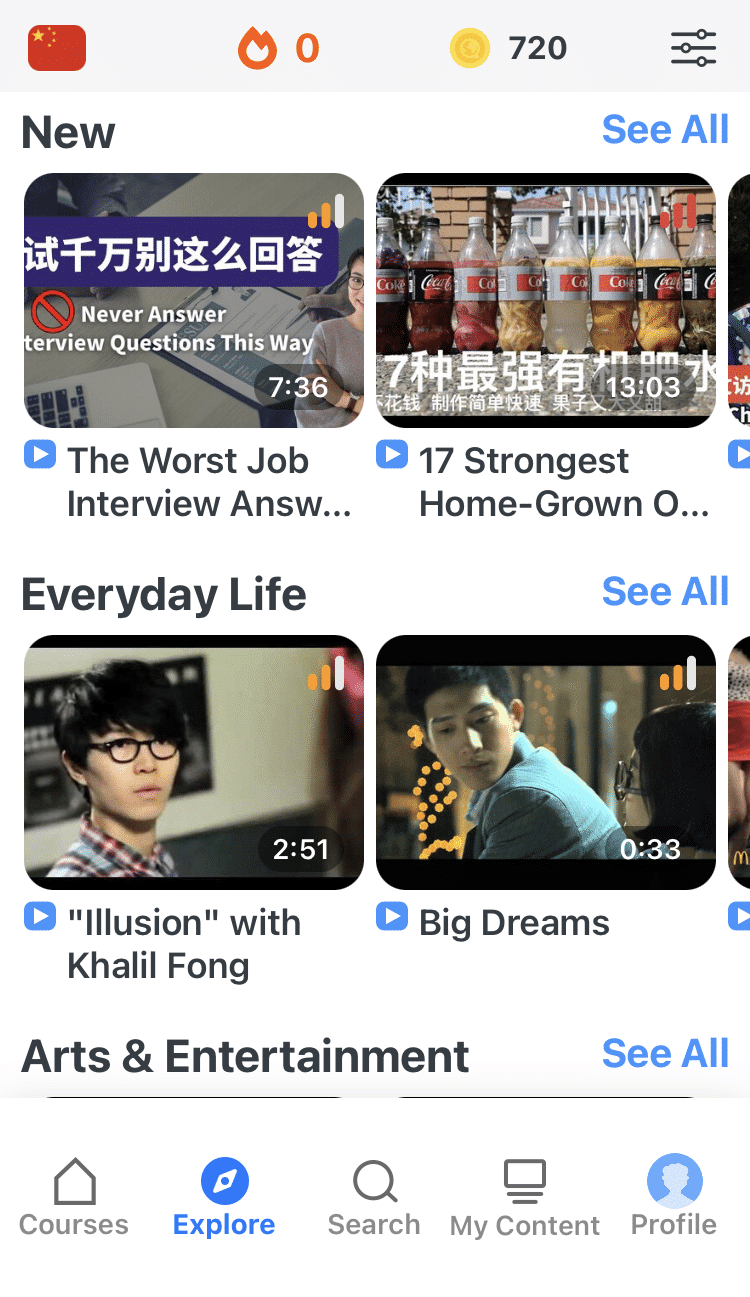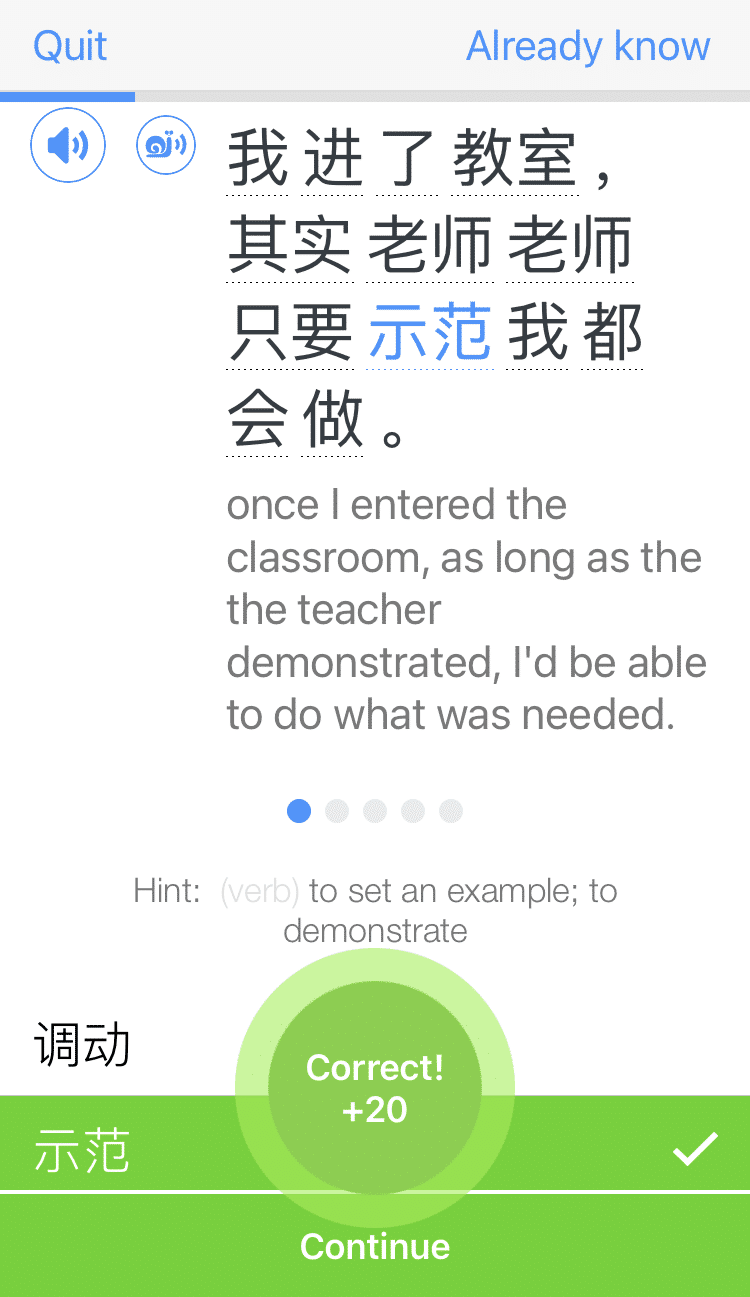
How to Prepare for the 2024 AP Chinese Exam
In need of AP Chinese practice tests to prepare for the big day?
Or perhaps you’re looking to get a head start. After all, it’s never too early to get a little studying done.
Whatever the case, we have all the tips and strategies to help you conquer this exam with flying colors!
Contents
- All About the Chinese AP Exam: Overview, Tips and Strategies
- Helpful Resources for More Information about the AP Chinese Exam
- Test-taking Tips and Strategies for the AP Chinese Exam
- And One More Thing...
Download: This blog post is available as a convenient and portable PDF that you can take anywhere. Click here to get a copy. (Download)
All About the Chinese AP Exam: Overview, Tips and Strategies
What Is the AP Chinese Exam?
The AP Chinese Language and Culture Exam is one of many Advanced Placement exams (AP) offered by the College Board.
It’s comparable to fourth semester college or university Mandarin Chinese levels. According to the College Board, the exam tests students’ “interpersonal, interpretive and presentational communication skills in Mandarin Chinese, as well as knowledge of Chinese culture.”
Should I Take the AP Chinese Exam?
AP courses and their accompanying AP exams mimic college-level requirements in that particular subject.
By taking AP exams and achieving a high score, you may be able to receive college credits.
Each college and program is different, so check with your school about how taking an AP course or exam can benefit your academic goals.
Taking an AP course is an excellent way to prepare for the exam. But you can take it without going through the course. Conversely, you can take an AP course and not go through with the exam.
In the case of the AP Chinese Exam, for example, it’s possible to self-study and then attempt the exam.
Now, let’s look at the format of the AP Chinese Exam, as well as some strategies for studying.
What to Expect from the Exam Format
The AP Chinese Exam is computer-based. As a test-taker, you’ll be reading text off of a screen, listening to recordings through headphones, typing Chinese on a keyboard and speaking Chinese into a microphone.
You can choose to use traditional Chinese characters or simplified Chinese characters for the exam. You also have a choice of two systems for typing Chinese: Microsoft Pinyin IME (MSPY) or Microsoft New Phonetic IME. Typing Chinese using pinyin is considerably easier than writing characters by hand.
You still need to know your Chinese characters very well, however, as many share the same sounds and pinyin spellings. Typing in a wrong character with the same pinyin will be considered wrong and result in marks counted against you. So, watch out for those homophones!
The length of the exam is approximately two hours. It consists of two main sections, each with two subsections.
Section 1: Multiple Choice
- 70 questions
- Approximately 1.5 hours long
- Worth 50% of exam score
Part A of Multiple Choice
- Skill focus: Listening
- 2 sections, 10 minutes each (20 minutes total)
- Each section has 10-20 questions
Part B of Multiple Choice
- Skill focus: Reading
- 60 minutes long
- 35-40 questions
Section 2: Free Response
- Contains two parts
- Approximately 45 minutes long
- Worth 50% of exam score
Part A of Free Response
- Skill focus: Writing
- 30 minutes long
- This part has two sections:
- 1. Write the narration of a story based on a series of pictures (15 minutes)
- 2. Write a response to a given email (15 minutes)
Part B of Free Response
- Skill focus: Speaking
- Approximately 11 minutes long
- This part has two sections:
- 1. Speak in response to conversation prompts (4 minutes)
- 2. Give a cultural presentation speech based on a given topic (4 minutes to prepare, 2-3 minutes to speak)
The above breakdown gives you a good idea of the format of the exam.
Helpful Resources for More Information about the AP Chinese Exam
AP Exam Calendar
2015 Free Response Sample Questions
2015 Scoring Guidelines
2015 Scoring Statistics
2015 Sample Answers
-
- Free Response Narration Question Sample Answer
First, this link lists grading criteria. Then, scroll down to see three sample answers for part one of the Free Response writing section, which is narrating a story. Next, scroll down further to see what grade each response merits, and why.
- Free Response Narration Question Sample Answer
-
- Free Response Email Question Sample Answer
Another helpful study resource—three sample answers to part two of the Free Response writing section, replying to an email, along with the scores merited by each response and why. Now you’ll know how to avoid creating an answer that gets a low score!
- Free Response Email Question Sample Answer
-
- Free Response Conversation Question Sample Answer
This resource has not one, but six sample Conversations with three student answers for each one. Every student answer is accompanied by examiner commentary on whether the student did well or not.
- Free Response Conversation Question Sample Answer
Test-taking Tips and Strategies for the AP Chinese Exam
A good tip for passing the AP Chinese Exam (that is, earning at least a 3 out of 5 possible) is to complete the tasks given in each section.
For example, in the story narration section (Free Response Part A), be sure to write about each picture and include a beginning, middle and end to the story you create. Perfect word usage and grammatical form are less important than communicating your ideas thoroughly and successfully.
Before you take the actual exam, however, you’ll need to prepare. These are the best tips to keep in mind as you get ready for the AP Chinese Exam.
1. Prepare early
The AP Chinese Exam isn’t one you can prepare for in a week. Depending on your level, it can take six months to a year or more to really master all the skills necessary to do well.
The exam tests all aspects of Chinese knowledge. It requires aptitude in listening, reading, writing and speaking, but also general cultural knowledge. None of these capacities are acquired overnight.
Giving yourself plenty of time allows you to learn progressively and in an effective, systematic manner. Cramming everything into a short time frame will likely result in stress, and a less-than-ideal test score.
2. Take advantage of past tests
A good thing about studying for the AP Chinese Exam is that all the past tests are available online. You can review every single exam dating back to 2007. You can even see sample answers, scoring guides and score distributions.
If you make use of all these resources, the exam may present less surprises. You can go into the exam with a good idea of what types of questions you’ll encounter.
3. Use preparation materials
Test preparation books, like Barron’s or Strive for a 5, provide hundreds of pages of material about the test and offer simulated test sections.
Beyond past tests, the AP Chinese Language and Culture website also gives specific examples of each section of the test and samples of how the pages and instructions on the test will actually look on screen. You can use these to practice even more.
4. Focus on developing one skill at a time
When studying for the exam, it can be very overwhelming to tackle all sections and skill types at once.
Instead, choose one skill or knowledge area—for example, Chinese reading—and focus on that for a week or month.
If your focus this week is reading, during the week work on increasing your vocabulary, memorizing new terms and practicing vocabulary recognition in context.
When you’ve had enough practice in one area, move onto another skill set, like speaking or listening, for the next week.
5. Read extensively
Extensive reading is reading at your highest level of comprehension for pleasure about things that interest you. You do not need a dictionary—about 98% of the language should be familiar to you personally.
Reading extensively may help to increase your reading speed, develop your ability to think in Chinese, improve your writing skills and help you pick up new words naturally and effectively in context.
To begin, try some graded reading material like Chinese Breeze, Mandarin Companion, the “Tales and Traditions” series or The Chairman’s Bao.
6. Listen extensively
As you may expect, extensive listening is the listening equivalent of extensive reading. Listen to level-appropriate material that interests you and contains just a bit of new language for you.
Extensive listening can develop both your ability to hear and understand Chinese and your ability to speak it. Try finding YouTube videos, Chinese-language TV shows or even your favorite movies dubbed in Chinese.
It may be difficult to find extensive listening material for your level. You can also try “very narrow listening.” This type of intensive, repeated listening is suited to short, interesting clips from movies, shows or YouTube videos that may be too fast or complex for your comprehension at first.
7. Make use of online tools
From language apps and sites to unconventional resources like movie and music streaming services, the internet is full of opportunities for you to top up your reading, writing, listening and speaking skills.
It’s always helpful picking tools that allow you to practice multiple skills at once. For example, watching subtitled Chinese movies challenges both your listening and reading abilities.
FluentU, for instance, lets you work on your speaking, listening and reading abilities through Chinese language audio and video clips.
FluentU takes authentic videos—like music videos, movie trailers, news and inspiring talks—and turns them into personalized language learning lessons.
You can try FluentU for free for 2 weeks. Check out the website or download the iOS app or Android app.
P.S. Click here to take advantage of our current sale! (Expires at the end of this month.)
8. Find a speaking partner
Find someone with higher-level Chinese, like a teacher or native speaker, to help you with speaking practice. Base your practice on speaking prompts from previous AP exams instead of having random conversations or small talk.
Get your speaking partner to give you constructive feedback. Make sure they don’t let you off too easily with mispronunciations or awkward sentence structures. Consider recording your speaking sessions for future review.
9. Develop cultural understanding
If you have not yet had the opportunity to travel in a Chinese-influenced region, traditional Chinese cultural values and practices may be unfamiliar to you. Being expected to comprehend and express oneself in Chinese about these cultural topics only adds to the challenge.
You can develop your overall cultural understanding by reading books in English on cultural topics to gain familiarity with the concepts. By learning about the culture in depth in your native language, it will be a simpler process to understand those concepts when you learn about them in Chinese.
Check out “Oracle Bones” by Peter Hessler or “A Thousand Pieces of Gold” by Adeline Yen Mah to read about both historical and modern China through personal accounts. “Dreaming in Chinese” by Deborah Fallows tells her story as an American who encountered Chinese culture as she began to learn Mandarin in China.
10. Time yourself during practice
Try to complete practice test sections in the time allotted. Since the challenge of the exam isn’t only to answer all the questions well but to do so within a certain time frame, it’s important that you learn to perform well under pressure and complete all tasks within time constraints.
To begin, take a single section of the practice exam and force yourself to complete it within the actual allotted time span. Once you have practiced individual sections enough, you can try taking a full version of the exam with the timer running.
And with that, I wish you happy studying!
Download: This blog post is available as a convenient and portable PDF that you can take anywhere. Click here to get a copy. (Download)
And One More Thing...
If you want to continue learning Chinese with interactive and authentic Chinese content, then you'll love FluentU.
FluentU naturally eases you into learning Chinese language. Native Chinese content comes within reach, and you'll learn Chinese as it's spoken in real life.
FluentU has a wide range of contemporary videos—like dramas, TV shows, commercials and music videos.
FluentU brings these native Chinese videos within reach via interactive captions. You can tap on any word to instantly look it up. All words have carefully written definitions and examples that will help you understand how a word is used. Tap to add words you'd like to review to a vocab list.
FluentU's Learn Mode turns every video into a language learning lesson. You can always swipe left or right to see more examples for the word you're learning.
The best part is that FluentU always keeps track of your vocabulary. It customizes quizzes to focus on areas that need attention and reminds you when it’s time to review what you’ve learned. You have a 100% personalized experience.
Start using the FluentU website on your computer or tablet or, better yet, download the FluentU app from the iTunes or Google Play store. Click here to take advantage of our current sale! (Expires at the end of this month.)






